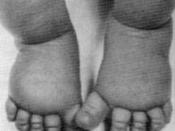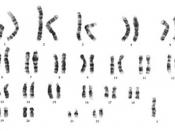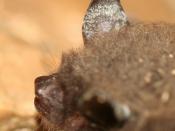Turner Syndrome Turner Syndrome, also known as Turner's Syndrome or Gondal Dysgenisis, is a relatively uncommon sex linked chromosome disorder. This disorder only affects females. The average person usually cannot tell when another person has this syndrome. It carries with it many signs of the disease and some problems as well.
Turner Syndrome is the result when a sperm carrying a no sex chromosome fertilizes a normal ovum, or egg. This results in the female having only one or partial absence of the two X-chromosome, usually found in women, making her have certain characteristics and functions.
Certain medical problems may be associated in any one situation. These problems may include heart problems (e.g. coarctation of the aorta or bicuspid aortic valve), kidney problems, and thyroid problems. Other common but less frequent medical problems could also include some hearing loss, orthopedic problems, or others. In almost all cases, the female is infertile, or not able to reproduce.
The patient may also have learning disabilities. If they were given a test on spatial and perceptional reasoning they would more than likely do poorly on them. The patient would also have behavior problems.
Some other distinguishing features may be extra skin folds around the neck, arms that may appear to turn out, several moles or nevi on the skin, puffy hands or feet, a small jaw and a high-arched palate of the mouth. One may also have low hairline, webbed neck, shied shaped chest, with little or no breast development, widely spaced nipples, and usually smaller than average height. However each case of Turner has different degrees of the disease and not one patient is expected to have all of these.
In some Turner syndrome cases, the patient has a combination of two X chromosome (XX) in some tissues and only one (XO) or three (XXX) in other tissues. These Turner patients are called mosaics and may have fewer symptoms or a lesser expression of the syndrome.
Medical treatment is being done to help some of the affects that this disease has on a person. But there is no "cure"ÃÂ for Turner's syndrome as antibiotics can cure a strep throat. However, some of the medical techniques that they are using to help these people are injections of a human growth hormone to promote growth in the average person. Orally administrated replacement sex hormones, estrogen, are used at the appropriate age to promote puberty development. Other treatments may include anabolic steroids. Patients' treatments are monitored by the doctor for complications. Treatments are monitored by growth measurements, x-rays, and hormone levels. It is also important to maintain good tissue and bone integrity.
Turner syndrome is not contagious. Since females with Turner syndrome are usually infertile, there is little risk that they will pass the disorder on to any children.
Although fertilization cannot be helped, there is and alternative if a woman desires to become pregnant. The female can chose to have her own baby through In Virto. This is the process that takes place outside the living body and in an artificial environment such as a test tube. In slang this baby would be a "test tube baby".
Turner's syndrome affects as many as 1:2,000 female births. It cannot be prevented yet and has had many new advances, those being the medical treatments one undergoes to suffer from Turner less and less. Although this disease is not common, doctors and scientists are becoming more familiar with it everyday, and more and more medical treatments are being discovered to help the millions of woman that cope with this disease everyday.
Bibliography 1. Frequently Asked Questions (FAQs). http:/www .onr.com/ts-texas/faq.html.
Page Author: Steven Ploof. 08/20/97 .
2. Discovery Health: Turner Syndrome. http://health.discovery.com/diseasesandcond/encyclopedia/2748.html. 05/25/00.
3. Tim's Turner Syndrome Information Page. Additional Information. http://www.iland.net/~tdluke/trnrs.html#Gen. 8 October 2000





